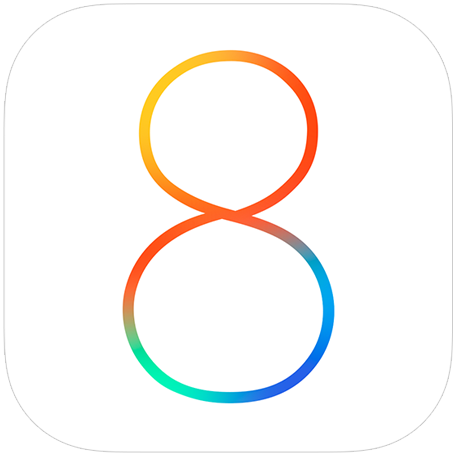 Apple began pushing out iOS 8 updates to eligible devices around 1pm ET on September 17, 2014. Unlike with iOS 7, which boasted a wide variety of differences from its predecessor iOS 6, in particular a brand new look and feel, iOS 8 was more incremental in its improvements. These include the ability to add widgets, extensions to share information between apps, and interactive notifications. While reviews of the new OS version have been generally positive, initial adoption of iOS 8 has been remarkably more tepid than the last two iOS iterations – iOS 7 and iOS 6.
Apple began pushing out iOS 8 updates to eligible devices around 1pm ET on September 17, 2014. Unlike with iOS 7, which boasted a wide variety of differences from its predecessor iOS 6, in particular a brand new look and feel, iOS 8 was more incremental in its improvements. These include the ability to add widgets, extensions to share information between apps, and interactive notifications. While reviews of the new OS version have been generally positive, initial adoption of iOS 8 has been remarkably more tepid than the last two iOS iterations – iOS 7 and iOS 6.
Apple began pushing out iOS 8 updates to eligible devices around 1pm ET on September 17, 2014. Unlike with iOS 7, which boasted a wide variety of differences from its predecessor iOS 6, in particular a brand new look and feel, iOS 8 was more incremental in its improvements. These include the ability to add widgets, extensions to share information between apps, and interactive notifications. While reviews of the new OS version have been generally positive, initial adoption of iOS 8 has been remarkably more tepid than the last two iOS iterations – iOS 7 and iOS 6.
To quantify iOS 8 usage rates through the first full day of public release, Chitika Insights examined a sample of millions of U.S. and Canadian iOS-based online ad impressions from within the Chitika Ad network generated between September 17 and September 18 2014. The growth rate of iOS 8 was then compared to total iOS Web usage using a time series to illustrate the rate of adoption of the new OS. For comparison, we overlaid the 24-hour iOS 7 and iOS 6 adoption data we catalogued in 2013 and 2012, respectively. Graphs depicting all three data sets can be seen below:


The more muted reception of iOS 8 in these early stages is likely due to several confounding factors. Perhaps most importantly, the pool of iPhones eligible to upgrade to iOS 8 is limited to iPhone 5S, 5C, 5, and 4S models, and many outlets have suggested that iPhone 4S users should not upgrade due to subsequent performance and functionality issues. If most 4S users decide to stick with their current OS, then the maximum potential adoption of iOS 8 shrinks to just over 65% of the North American iPhone user base who use iPhone 5-type models.
Additionally, some users experienced issues downloading the update, as the installation software takes up more than 5GB of space if downloaded over-the-air. This meant that some users needed to delete or move a significant amount of items off their device to download the update, especially for users of phones like an 8GB iPhone 5C, where this process would be made even more difficult. This is on top of intermittent server issues that impacted some users.
Furthermore, the iPhone 6 and 6 Plus are set to be formally released on Friday, September 19, with a supposed record number of presale orders already having been placed. For any current iPhone users planning to buy either of the new devices, which come pre-loaded with iOS 8, the impetus to update their soon-to-be former phone is minimal.
In the graphs above, you can see how iOS 8 being a less dramatic upgrade as compared to iOS 7 seems to have impacted developer activity as well. Despite relatively similar availability, at 0.1%, iOS 8 beta activity directly prior to release was noticeably lower than the 0.7% figure we observed prior to the iOS 7 release in 2013.
While the slate of new iPhones will certainly provide a significant boost to iOS 8-based Web traffic, it’s unclear whether that increase will spur adoption back to iOS 7-like rates.
